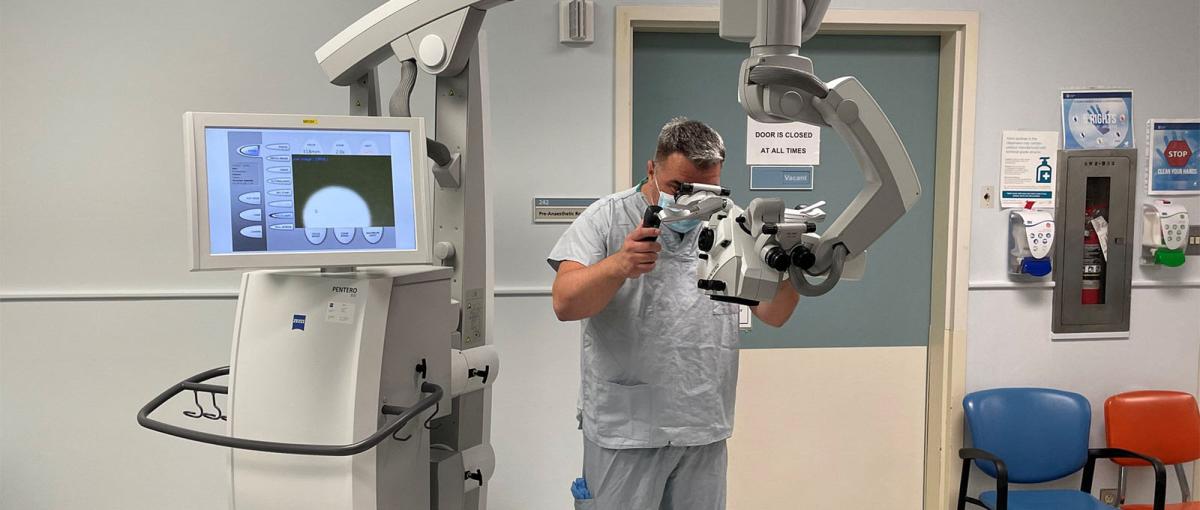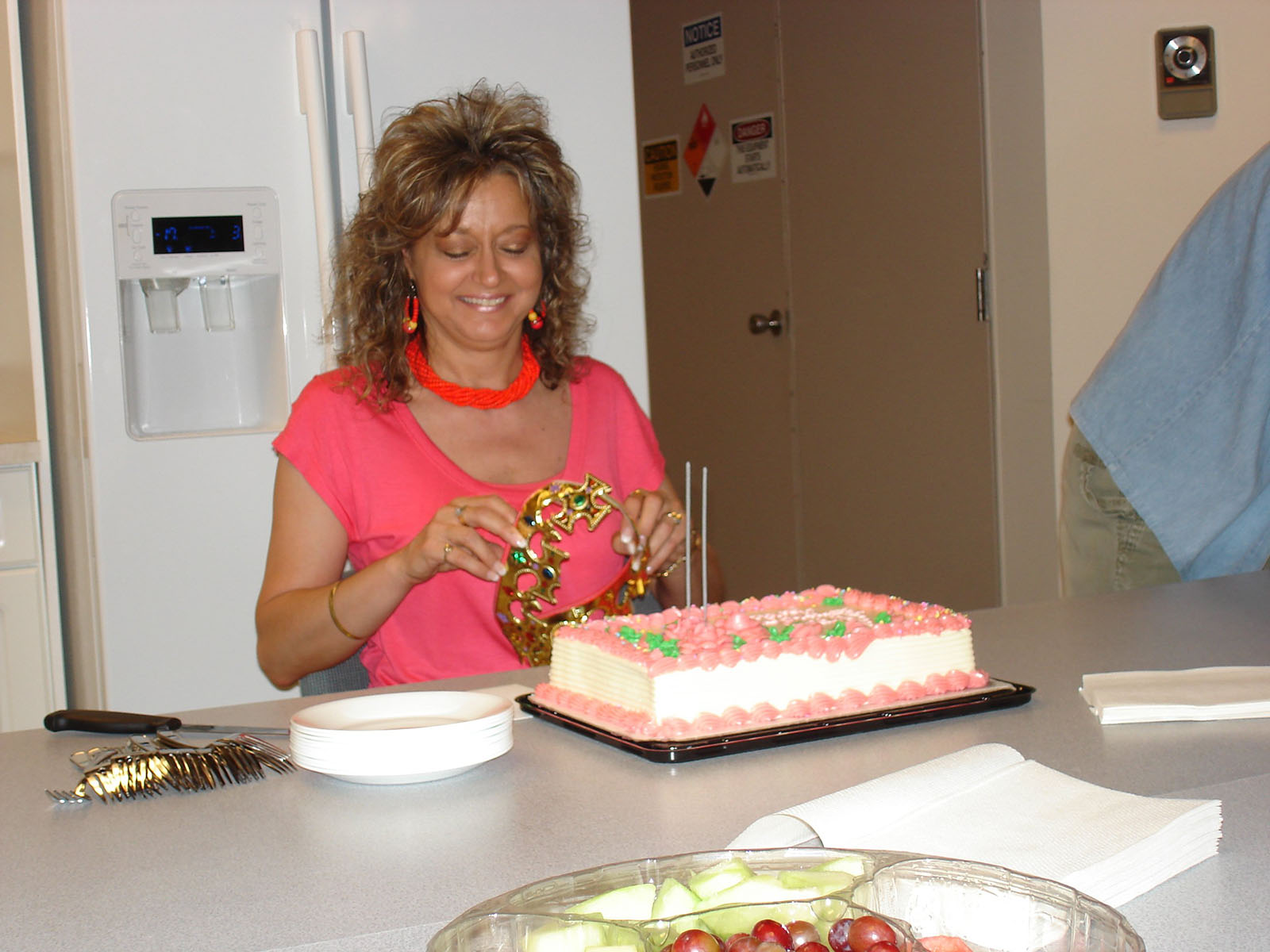Specialized microscope helps improve patient outcomes
Leading-edge spine surgery minimizes complications and reduces recovery time

August 9, 2022
By Karen Cho, Senior Communications Advisor, Covenant Health
Jackie Van Heukelom was 18 years old when she suffered a traumatic spine injury after being accidentally kicked in the back. One of her vertebrae was broken, and three others were cracked.
She thought she had made a full recovery, but pain slowly returned about 15 years ago. She tried various treatments — chiropractors, acupuncturists, cortisone injections, analgesics — but the relief they brought was only temporary.
Then a few years ago, Jackie’s lower back and sciatic pain became debilitating, making simple tasks impossible. “I used to walk my two dogs; I had not walked them since 2018,” says Jackie. “I quit shopping because I couldn’t stand in line at the store, and I stopped doing housework. I would come home from work and just sit on the couch.”
Jackie says that while her husband had been supportive and was a big help with chores, she knew she needed help. “I was walking almost at a 45-degree angle for a year. If I tried to stand up straight, I had to bend my knee. I had no quality of life.”
All that changed when she had minimally invasive spine surgery last December at the Misericordia Community Hospital.
“It was a night and day difference,” says Jackie. “When I woke up, my sciatic pain from my buttocks down to my leg was instantly gone and has not come back. It was a 100 per cent turnaround for me. I’m so happy!”
Jackie was operated on by Dr. Andrei Manolescu, an orthopedic and spine surgeon who performed a fusion and decompression of the two lowest vertebrae of her lumbar spine. Using a state-of-the-art, next-generation microscope with full high-definition resolution technology that enhances image quality, he was able to get a more precise view.
“The microsurgery microscope allows me to employ minimally invasive surgical approaches to the spine and, as such, preserve the muscles and tendons. I can access the spine with less invasiveness, which translates into less blood loss, less chance of infection and faster recovery within the first year after surgery.”
He adds that use of the equipment results in significantly reduced recovery time for patients. “They have faster functional recovery within the first year when compared to the traditional open spine surgery.”
Jackie recently returned to her work as an administrative assistant with the Government of Alberta after three months of recovery. She says her progress has been slow and steady.
“I still sit with an extra cushion on my couch, but I’m able to stand and walk longer and sleep through the night without waking up in pain.” And she is able to walk her dogs again.

Jackie was able to return to work after three months of recovery from her surgery.
Carol Price, operating room program manager, who advocated to bring the new microscope to the Misericordia hospital, says many people will benefit from the technology. The $350,000 equipment was funded by supporters who purchased Covenant Foundation Lottery tickets.
In addition to using the microscope in the lumbar spine surgery program, which has expanded to treat cervical and thoracic spine disease, surgery teams may consider employing it for those needing other forms of microsurgery.
“The addition of this innovative technology will enhance experiences of patients who are undergoing breast reconstruction utilizing their own tissue, as well as enable us to be known as a centre of excellence for our spine surgery program,” says Carol.
She adds that the leading-edge microscope will be an important teaching and training tool for surgical residents, fellows and nursing staff.
For Jackie, the surgery has been “life transforming” and has opened up a whole new world. “My doctor said to give it six months and to let pain be my guide. I’m looking forward to going back to the gym, riding my bike — maybe even doing something wild like dancing.”